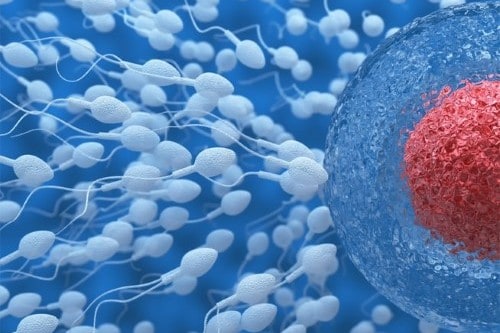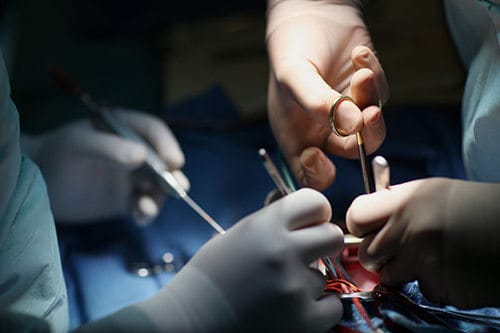Surgical Epididymal Sperm Aspiration (PESA, MESA)
The development of techniques for surgical epididymal sperm aspiration has offer infertile male patients, especially those who suffer from azoospermia, a great chance of having baby. The most commonly used techniques include Microsurgical epididymal sperm aspiration (MESA) and Percutaneous epididymal sperm aspiration (PESA).
Male factors account for 30-40% causes of infertility, equal to female ones. Male infertility causes may come from psychological factors such as erectile dysfunction and delayed ejaculation…; diseases and damages of male reproductive system including inflammation and structural malformation…; or lurks deeply in the genetic material…

Naturally, to fertilize an egg, sperm must struggle on a hard long way “crossing” the woman’s vagina, “swimming” upstream through the endometrium, choosing the right fallopian tube to which the mature egg is simultaneously travelling from the other end, and then drag through it. This hard marathon prevents numerous sperms from reaching the egg and only the strongest ones could go to their destination. Futhermore, Mother Nature also requires millions of sperms to reach the destination so all of them can together “attack” the zona pellucida – the egg’s strong armor – allowing only one lucky sperm to get in and fertilize the egg. This natural mechanism ensures that the egg is fertilized by the best sperm, assuring the healthiest next generation. Therefore, it was a huge challenge of treating sterility for patients with low sperm count, immotile and especially no sperm at all in the seminal fluid (azoospermia). In numerous cases, it was impossible.

The invention of In Vitro Fertilization (IVF) and especially, the Intracytoplasmic sperm injection (ICSI) technique in 1992 started a great revolution, opening opportunities for these patients. It is a miracle. With the support of necessary equipment and highly qualified embryologists, the fertilization for each oocyte now requires only one strong sperm instead of millions of sperms as natural. This means that the patient would have a chance to be a father with a very very small amount of sperm, or even with a single one. The only concerning problem is that how to find and retrieve these sperms?
After spermigram shows that there are no mobile sperm in patient’s ejaculation after centrifugation or the patient had been diagnosed with azoospermia before (obstructive or some types of non-obstructive), the specialist will consult with their patient. Base on the patient’s conditions and the capacity of the clinic, one of the sperm aspiration techniques would be considered. The most commonly used techniques include Microsurgical epididymal sperm aspiration (MESA) and Percutaneous epididymal sperm aspiration (PESA).
MESA – Microsurgical epididymal sperm aspiration
MESA is often applied for obstructive azoospermia in which surgical corrections is not feasible or desirable. In this technique, the testicles are exposed so that sperm can be aspirated from epididymis. The technique can be performed under general anesthesia. The performing duration is about 30 minutes and patients will be discharged after 2 hours.
Pro: High efficiency. This approach allows specialist to obtain sperm in 90% of times (according to Gangrade’s research on Clinics in 2013). The obtained sperm can be cryopreserved for future use. A big meta-analysis study shows that there is no difference between freshly retrieved sperm and thawed sperm in terms of fertilization, implantation and embryos development.

PESA – Percutaneous epididymal sperm aspiration
PESA is also instructed for patients if it is not feasible to perform surgical corrections on obstructed vas deferens. PESA is a percutaneous technique so unlike MESA, where the surgeon is able to visualize the whole testicles and epididymis, it could damage or scar the epididymis. However, this is not a worrying issue for these patients as it doesn’t change their situation. The technique is also performed under anesthesia. The performing time is about 15 minutes and the patient will be allowed home after 2 hours.
PESA’s advantage is the high efficiency in retrieving sperm. Sperm can be harvested in 80% cases of obstructed vas deferens (according to Yafi’s research published on Urology in 2013 and Gorgy’s research on A.R. review in 1998). The genetic material damage in sperm obtained from MESA and PESA with normal motility is less than 1% which is equal to sperm from donors (Ramos’s research in 2012). In case of PESA or MESA failure, the patient should consider to take other techniques such as testicular biopsy or testicular microsurgery with lower success rates and more invasive.

At Hong Ngoc IVF Center, Hong Ngoc General Hospital, these techniques are well performed by our highly qualified specialists who have been trained in Europe and boasts years of experience. More importantly, sperm samples are directly processed, preserved and used for ICSI by the leading embryologists who are not only skillful but experienced, ensuring the success of your IVF cycles.
For further information, please contact:
HONG NGOC IVF CENTER – Hong Ngoc General Hospital
Add: 14th floor, 55 Yen Ninh, Ba Dinh, Hanoi
Hotline: (+84) 915 960 139 – 0915 330 016
Tel: (+84-24) 3927 5568 ext 6820/6825
Mail: arthongngoc@hongngochospital.vn

 Tiếng Việt
Tiếng Việt